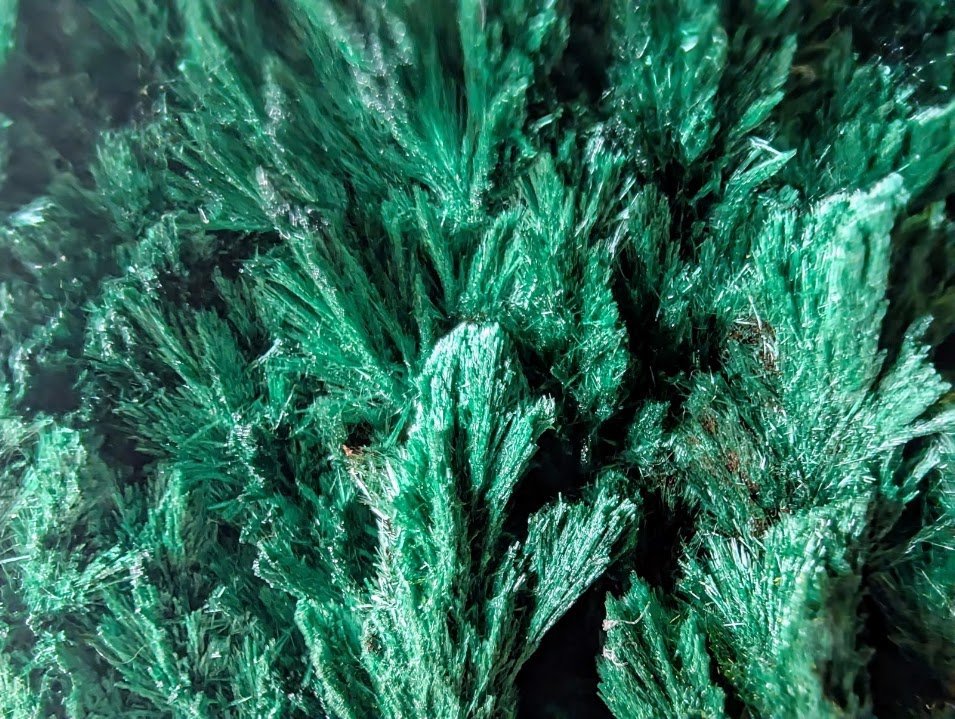
How Crystals Form: Inside the Earth’s Natural Artistry
Share
Crystals are Earth's masterpieces, born from a perfect balance of chemistry, pressure, and time. Discover how these natural wonders take shape and why no two crystals are ever exactly alike.
The Building Blocks: Chemistry Meets Environment
Crystals are the result of nature's ability to organize matter with extraordinary precision. When the right conditions come together — temperature, pressure, chemical composition, and time — atoms arrange themselves into repeating, orderly structures called crystals. These structures can be microscopic or monumental, but all reflect the same fundamental processes.
Some crystals form deep within the Earth under intense heat and pressure, while others arise near the surface through the slow evaporation of mineral-rich water. Their final shapes and sizes tell the story of the environment that birthed them, from fiery volcanoes to tranquil caves. Understanding these formation processes offers a window into the geological forces that have shaped our planet for millions of years.
Types of Crystal Formation Environments
Igneous Formation: Crystals Born from Fire
Igneous crystals originate deep within the Earth where extreme temperatures melt rock into molten magma. As this magma cools, minerals begin to solidify and form crystalline structures. The rate of cooling plays a critical role: slow cooling allows atoms more time to arrange into large, well-defined crystals, while rapid cooling produces smaller, fine-grained textures.
Some of the world’s most impressive quartz veins, smoky quartz clusters, and even topaz specimens are products of this fiery birth. Pegmatites — coarse-grained igneous rocks — are especially famous for hosting large, flawless crystals. Igneous environments produce crystals with incredible clarity and sometimes unique inclusions, making them highly prized by both collectors and metaphysical practitioners.
Metamorphic Formation: Crystals Forged by Pressure
Metamorphic crystals form not through melting, but by the transformation of existing rocks under immense heat and pressure. During metamorphism, minerals recrystallize without reaching a molten state, resulting in new mineral structures with different chemical and physical properties from the original rock.
Classic examples include garnets embedded within schist, kyanite blades, and staurolite "fairy crosses." These crystals often display exceptional hardness and density, reflecting the intense conditions they endured. Metamorphic crystals tend to have a rugged beauty — symbols of endurance and transformation — which resonates deeply with collectors and healers alike.
Sedimentary Formation: Crystals Formed by Water and Wind
Sedimentary crystals grow through the evaporation of mineral-rich water or the slow deposition of minerals from solution over time. When bodies of water like lakes, seas, or even cave pools evaporate, minerals such as halite, gypsum, and calcite are left behind, crystallizing layer by layer.
Desert roses (clusters of gypsum or barite crystals that resemble flower petals) and massive beds of halite (rock salt) are classic sedimentary formations. These crystals often have unique growth patterns that reflect the conditions of their environment, such as wind, temperature, and salinity. Though sometimes softer and less durable than igneous or metamorphic crystals, their intricate forms and historical significance make them a favorite among certain collectors.
Hydrothermal Formation: Crystals Grown from Earth's Heated Waters
Hydrothermal crystals form when mineral-saturated, superheated water moves through cracks, vugs, and cavities in the Earth's crust. As the temperature drops or chemical reactions occur with surrounding rocks, minerals begin to precipitate out of the solution, building crystals over time.
This method creates some of the most vibrant and highly structured specimens in the mineral world — including fluorite cubes, stibnite sprays, vivid amethyst clusters, and intricate pyrite formations. Hydrothermal environments often result in multi-mineral combinations, leading to stunning specimens with unique aesthetic qualities like zoning, phantom growths, and vibrant color transitions. Because of their slow, fluid-based formation, hydrothermal crystals often exhibit extraordinary clarity and well-defined geometric shapes.
Each of these natural processes — fiery, pressured, flowing, or evaporative — leaves a lasting fingerprint on the crystals we treasure today, offering collectors a glimpse into Earth’s dynamic inner workings.
Final Thoughts: Earth's Timeless Sculptors
When you hold a crystal, you are holding a geological story that has taken thousands — sometimes millions — of years to unfold. From the depths of volcanic chambers to tranquil desert lakes, each crystal is a testament to the raw power, patience, and artistry of the planet itself.
At Legacy Crystals and Minerals, we seek out specimens that celebrate this story — choosing pieces that showcase nature's finest craftsmanship. Whether you are a collector, healer, or admirer of Earth's beauty, understanding crystal formation deepens your appreciation for these timeless treasures.



